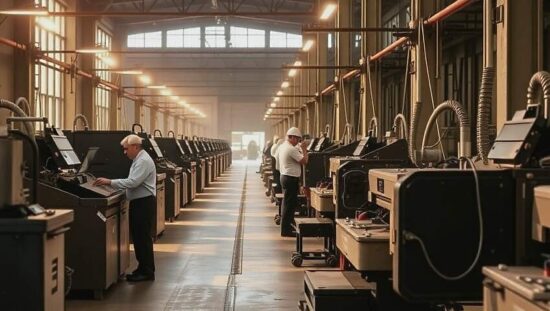Germany’s manufacturing sector presents a superficially positive picture in September 2025, but closer examination reveals underlying vulnerabilities and uneven recovery across key industries. Preliminary data released by the Federal Statistical Office (Destatis) indicates a rise of 0.6% in real orders compared to August, adjusted for seasonal and calendar variations. Year-on-year, a 4.1% increase in orders offers a welcome, albeit potentially fragile, signal of renewed industrial activity.
The growth is largely attributed to strong performance in specific, technology-driven sectors. The burgeoning electrical equipment manufacturing sector witnessed a substantial rise of 2.4%, while data processing, electronic and optical production saw gains of 1.8%. The automotive industry, a critical pillar of the German economy, managed a modest 0.7% increase – a figure some analysts interpret as a sign of continued pressure despite government incentives and shifting consumer preferences towards electric vehicles.
While domestic orders experienced a small rise of 0.3% month-on-month, a more significant uptick of 0.9% in foreign orders suggests ongoing reliance on international demand, a factor that leaves the sector exposed to global economic headwinds and geopolitical instability. The investment goods segment, a vital barometer of future industrial investment, only marginally increased by 0.4%, raising questions about the pace and commitment to long-term capital expenditure. A robust 1.7% rise in intermediate goods and a stronger 2.1% rise in consumer goods orders offer tentative signs of broader recovery, but their sustainability remains to be seen.
Notably, the order backlog remains at 7.9 months, a figure that while indicating stability, also suggests a potential bottleneck in production capacity and the ability to swiftly respond to future demand fluctuations. The extended backlog of 10.7 months for investment goods, contrasting sharply with the shorter backlogs of 4.3 months for intermediate goods and 3.6 months for consumer goods, could be a symptom of ongoing supply chain issues and rising material costs – challenges that policymakers need to address to ensure a truly sustainable industrial recovery. The relatively short consumer goods backlog, conversely, could signal shifting demands and potential overstocking.
The current data presents a complex narrative. While a rise in orders is a positive indicator, the sectoral disparities and extended backlogs highlight the potential for fragility and persistent challenges within Germany’s manufacturing landscape, demanding careful monitoring and proactive policy interventions.





